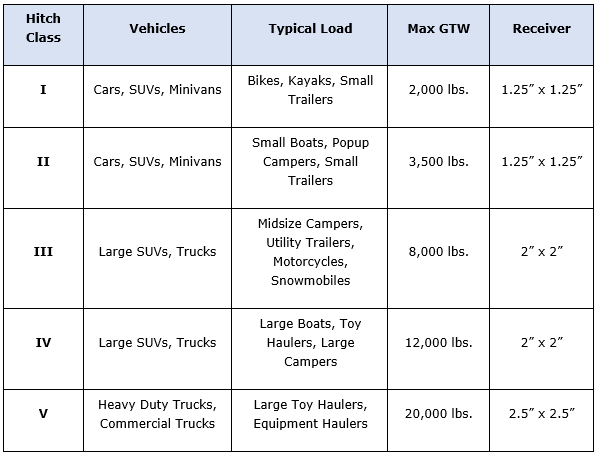Owning a trailer comes with a healthy dose of freedom and fun, whether it’s a camper, horse trailer, boat, ATV transport, or simply something to haul rock and dirt. However, there are a few things to know before you hitch up and hit the highway. Those include trailer ratings, how much weight your rig can handle, and how to back that trailer up without causing a scene.
Start with Your VehicleEvery vehicle has a towing capacity. Be sure to consult your vehicle’s specifications before pulling anything. As you look for that magic number, you’ll notice a few acronyms that are important to understand:
GTW (Gross Trailer Weight): The weight of a trailer when fully loaded.
TW (Tongue Weight): The downward force on the hitch ball created by the tongue.
GVWR (Gross Vehicle Weight Rating): The maximum weight of a vehicle when fully loaded.
GCWR (Gross Combination Weight Rating or Gross Axle Weight Rating (GAWR)): Weight of loaded tow vehicle and trailer (this includes passengers).
Once you know your vehicle’s maximum weight rating, it’s time to do some math. As long as your GTW and your GVWR do not exceed your rig’s GCWR, and your TW doesn’t exceed 15% of the total GTW, you should be good to go.
Use the chart below as a starting point. Remember, every vehicle’s towing capacity is different. Consult your owner’s manual or manufacturer for more details.

Coastal Note: It’s important that your ball mount fit into your receiver hitch while also meeting or exceeding your gross trailer weight.
Getting Level and Choosing the Right Ball
Your ball mount can either come straight out or offer a rise or drop. The one you choose will depend on what you are hauling. The goal is to keep your trailer level. When it comes to the ball for your trailer, simply get one that fits exactly into the coupler.
Backing Up Made Easy
The real trick to backing up a trailer is practice. Over time, you’ll get the knack for it. For beginners, here’s a quick rundown of how to back your trailer into a spot.
Coastal Tip: Backing from the driver’s side is easier. Backing from the passenger gives you a blind spot.
-
Pull straight ahead so that the back of your trailer is just beyond where you want to park.
-
Roll down your windows and adjust your side mirrors as needed.
-
Ask for someone to spot you if possible.
-
Check for overhead obstacles (power lines, etc.)
-
Place your left hand in the 6 o’clock position (this makes it easier to navigate)
-
Slowly back up. Using your left hand at the bottom of the wheel, move your hand (not the wheel) in the direction you want the trailer to go. If you move your hand to the right, the trailer will turn right. If you move your hand to the left, your trailer will turn to the left.
-
The further you turn the wheel, the sharper your trailer will turn.
-
Don’t be afraid to stop, pull forward, or even try again from the beginning if needed.
Get Hitched at Coastal
You’ll find everything you need to haul your camper, trailer, toy hauler, or boat at your nearby Coastal Farm & Ranch. Not sure how to choose the right receiver or ball for your vehicle? Just ask. The folks at Coastal know their stuff. They can even give you a few tips to help you back up like a pro.
